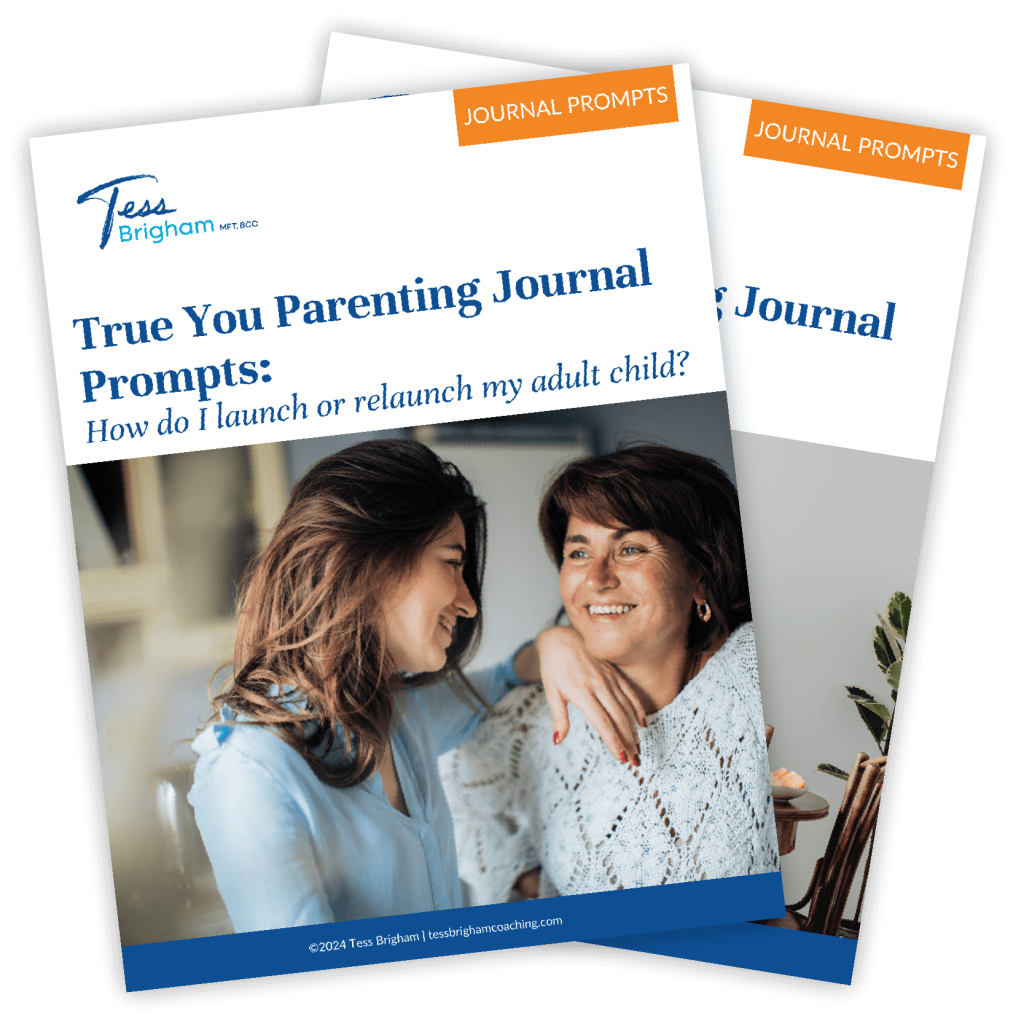When you’re facing a problem, the first solution that comes to your mind might not involve journal prompts, but hear me out…
You’ve heard the phrase, “Life’s a journey, not a destination.” Or maybe you heard this version, “Life’s a journey, not a race.” And even better, “Life’s a journey, there is no one ahead of you or behind you. You are exactly where you need to be.”
These are the phrases we’ll say to our friends when they’re struggling but when it comes to our problems we don’t want to hear about life’s journey – we want to know exactly how to get there, and once we’re there, exactly what’s going to happen.
Unfortunately, it doesn’t work that way.
Journeys are not well-thought-out plans; they don’t go in straight lines and they certainly don’t have an itinerary. A journey is a process with the knowledge that your experiences will mostly dictate which direction you go in.
And in many ways, journeys and journaling go hand in hand (they even start with the same 5 letters…).
What is journaling?
Journaling is writing down your thoughts and feelings in order to understand yourself better. Journaling also allows you to process certain situations and experiences. When you journal you’re taking all those thoughts and feelings circling in your brain, making you feel anxious and overwhelmed, and you’re putting them on paper.
Once we put something down on paper it feels less scary and more manageable which allows you to tackle it not from a place of fear but from a place of awareness. The more you “expose” your thoughts and feelings, the less power they hold over you.
One of the more difficult aspects of being at a crossroads in your life is facing the unknown. You’re at a point in your life where your current life doesn’t fit but you have no idea what kind of life is the right fit for you. Journaling will help you get clear on what you want and don’t want, what thoughts you need to let go of, and clarify where you need to put your attention.
Why is journaling important
There have been a lot of studies about the benefits of journaling. A 2018 study found journaling for 12 weeks reduced the mental distress of people who struggle with anxiety. In another study, conducted in 2003, 100 young adults were asked to journal for 15 minutes about a distressing event or simply about their day twice a week. The participants who journaled saw the biggest results, which included: a reduction of depression and anxiety symptoms as well as anger and frustration, especially if they were journaling about a specific event.
Journaling helps you better understand your thoughts and feelings. It expands your insights and allows you to take all of those thoughts and put them onto paper so you know why you’re thinking and feeling the way you do. It helps you improve your emotional intelligence, inspires creativity, boosts memory, enhances critical thinking and the list goes on.
For more information on How to Journal, check out my TikTok video.
Overcoming Writer’s Block While Journaling
In order to navigate through life, you have to start to see yourself as an explorer. You’re on your journey, seeking knowledge and new experiences. You have some idea of what’s out there but you know you want to see it for yourself.
By seeing yourself as an explorer, you can let go of the fear of failure because, when you explore, you allow yourself to be curious. When you’re curious, you don’t care if you’re “right” or “wrong,” you only care about what you learned from the experience.
As much as you may wish someone would come along and tell you exactly what’s going to happen if you travel down this road vs. that road, you know deep down inside that’ll never make you happy. If we all wanted to be told what to do, we’d still be living at home with our parents.
This is where journaling can really help you. Journaling allows you to explore the inside of your mind. Journaling allows you to go wherever you want to go, there are no limits. It pushes you to dig deep and write down the things that maybe you would never say to another person, but you need to admit to yourself.
Leveraging Journaling to Help You Problem Solve
If you want to learn how to coach yourself and solve your problems, be an explorer. Grab your “map” ( i.e. your journal) and start working on your path forward. Writing out your feelings might make you feel like you’re dragging your feet on this task, but remember research has shown journaling has helped people reduce symptoms of depression and anxiety, so by taking this step you’ll start to feel better.
Journaling allows you to organize your thoughts and feelings and it also allows you to get all of your unhelpful thoughts out of your head and onto paper. Our irrational thoughts are so scary in our minds but once you see them written on the page, those same thoughts lose power. The best part of journaling is that it forces you to put down your phone, get away from screens, and stop scrolling social media for the answers. Plus, once you turn down all of that unhelpful noise, you’ll be able to think more clearly about solutions.
Looking for a step-by step guide where I take your hand and walk you through how to make those big, scary decisions? Get started today with my online course – True You: Decision Designer.
For more information on How to Better Trust Yourself once you’ve made a decision, check out my YouTube Video.
Ready to get started? Grab your pen and notebook and explore these two journal prompts:
Journal Prompt No. 1: Look To The Past To Help You Navigate Difficult Situations
When a situation like this has come up in the past, what’s worked for me and what hasn’t worked for me? Do I think those things will work for me now?
Just like you learned in school, you have to understand your history or you may be doomed to repeat it. While past experiences don’t define you as a person, they are clues as to how previous life experiences affect how you see yourself and the world around you.
By asking yourself what’s worked and hasn’t worked in the past, you’re parsing out which thoughts, feelings, behaviors, and mindsets helped you move forward and which kept you stuck. You want to spot negative patterns of behavior because awareness is the first step towards change.
Now that you have a better sense of what’s worked as well as what hasn’t worked in the past, ask yourself if you think it’ll work for you today. You’re looking into the past to better understand the choices you once made, but you also have to take into account how you’ve changed since that time.
Don’t get into the habit of assuming you will always feel the same way about certain people, events, and situations. By looking into the past and then drawing your attention to today, you’re able to see how you’ve changed and evolved and that’s a good thing.
Journal Prompt No. 2: Look At The Present (And A Little Bit Into The Future)
Right now, what feels like the best choice for me at this moment? If I make this choice, then what do I think will happen in the future? Is that the future I want?
You’ve looked into the past and now have more awareness of your patterns of thinking and behavior, which means it’s time to look at the present day. There is so much pressure to make the “right” decisions all the time when in fact, we have no idea if a decision is “right” or “wrong” for us until after we’ve made the decision.
This is why it’s so important to ask yourself, based on how you feel today, what you want to do. You know what’s worked and hasn’t worked in the past. Now that you’re in the present, what do you think will work moving forward?
The hardest part of decision-making is sitting with the decision once we’ve made it. While you may feel tortured trying to make a decision, you still have all your options available to you which means there is no chance you can fail. The fear of failure is the biggest reason why so many people don’t make certain decisions, they fear they’ll make the “wrong” choice.
Remember you’re an explorer; there is no “right” or “wrong” direction. Allow yourself to think about what will happen if you travel east and if that’s what you’re looking for right now. Then think about what happens when you travel west and if that’s the future you’re seeking.
Writing your thoughts down allows you to experiment so you can sit with various visions to help you determine which way to go. It also allows you to examine your fears. Fears are, well, fears, they are always most powerful in the dark. Coaching yourself through journaling gives you the opportunity to bring those fears to light on the page.
Looking for more great journal prompts to help you navigate your life? Check out my TikTok video.
Ways to integrate journaling into your life
How to make it a habit:
Your goal throughout your life is to better understand yourself and what you want for yourself. When you know yourself you’re able to make choices that align with your values. When you make choices that align with your values your life feels like your own and one you want to live.
All of this may feel daunting which is why it’s important to start small. For 10 minutes a day, preferably in the morning, you’re going to meditate for five (5) minutes and then journal for five (5) minutes. The best part: you don’t have to leave the house, it will cost you nothing and you’ll start to see the benefits pretty quickly.
I’ve already told you the benefits of journaling. Here’s why meditation is so powerful:
Meditation
Meditation is the practice of focusing your mind either on your breath or a mantra while you notice, but not engage, with your thoughts. Research has shown meditation is incredibly powerful because it’s one of the best ways to manage depression and anxiety while also improving your mood and your emotional reactions.
What makes meditation so vital is you’re actively retraining your brain. While your brain is a static physical structure, it changes based on what you’re thinking and feeling. Our brains have the ability to improve and grow but it requires regular practice.
Most people believe in order to “meditate correctly” you must completely clear all of your thoughts. They give up when they find they can’t stop their thoughts during meditation and just assume meditation isn’t for them. Anyone can meditate and the goal isn’t to completely stop your thoughts, that’s impossible, but to simply notice your thoughts and then let them go.
For example, If you start thinking about what you’re going to have for dinner, instead of beating yourself up for having the thought, simply notice, “I’m thinking about dinner and I’m going to let that go and refocus on my breath or this mantra or the meditation I’m listening to.” You’re not stopping the thoughts, you’re noticing them without judgment and bringing your attention back to the present moment.
Doing this over and over again will help you be more present in the moment. This will help you stop ruminating about the past and stop worrying about the future. It will also help you become more aware of what you’re thinking and feeling which will inevitably help you learn more about yourself, and what you want and don’t want so you can start making decisions that feel right to you and only you.
Why meditation and journaling together?
While both meditation and journaling will help you better understand your thoughts and feelings, they work really well together. Meditation helps raise your awareness and teaches you that just because you have a thought it doesn’t make it true and it doesn’t mean you need to do something about it. Journaling can expand your insight and allow you to take all of those thoughts and put them onto paper so you can understand why you’re thinking and feeling the way you do.
How to do the 10-minute exercise:
Pick a time of day when you know you can accomplish this exercise without interruptions or distractions. This is why morning is always best. Block off this time in your calendar. The day before you start, pick a meditation you can do. You can find great meditations on Youtube or you can download an app like Headspace or Calm. Before you start, know what you’re going to use and have it ready. Also, make sure you put aside a notebook and a pen.
When it’s time to practice the exercise, set a timer for five (5) minutes (or pick a five (5) minute meditation). Immediately after your meditation take a breath and set your timer for another five (5) minutes and open up your notebook and start journaling. Don’t censor yourself, just write what comes into your mind. This simple act will start to awaken thoughts and feelings you didn’t know existed.
Once you start getting comfortable with this you can increase the meditation time to six (6) minutes and then seven (7) minutes. Meditation is a practice you can build up over time but you probably don’t want to keep journaling after five (5) minutes because your hand will start to hurt. Also once you get everything out of your head it may start to feel like a chore to keep writing.
How to use journaling to help you deal with family (especially during the holidays)
Whether you love your family, hate your family, or feel somewhere in between, spending time with your family will always bring up a lot of feelings.
While it’s easy to think, “I’ve been working on myself for this entire year. I’m building my confidence and creating a life I love. Nothing can get in my way.” Having a sense of how you want to show up, what your plan is if things go sideways and your personal boundaries is critical before family gatherings.
Whether you are best friends with your parents or you barely speak with your family, the holidays and other family gatherings force us to think about our relationships with our loved ones.
Each of us has a different set of wants and needs from our families. Some of you are recent college graduates who need your parents to treat you like an adult. Some of you have a parent you love very much but drinks waaaaaay too much. Some of you have a parent or sibling or another family member that has hurt you over and over again and the idea of “playing nice” for one more year makes your blood boil.
The biggest mistake I see my clients make is going into family gatherings with the mindset that they have no control over their family interactions. You can’t control what your parents do or say or how much your uncle may drink or how selfish your sister can be…but you can control how you respond and how you choose to react.
None of us had any say over the family we were born into and as children, we need to do what we need to do in order to survive. The best part of being an adult is you get to make choices on how you live your life. More importantly, you get to decide what you will or will not tolerate.
This means you can’t just show up and expect people to know how to treat you and then get upset when they can’t read your mind. You have to first figure out what you need and want from your family and from yourself.
How do you figure out what you’re going to do if your selfish sister gets under your skin again? Stop fuming and getting angry and start figuring out what you’re going to do differently. The best way to know how you feel about it and what you want to do about it is…you guessed it: journaling!
Journaling gets your internal thoughts – the ones spinning around in your head all day long making you feel confused and anxious – external. Once the internal becomes external, thoughts, feelings, and beliefs start to take shape, make more sense, and lose their power – in a good way.
Here are some of the questions to get you started:
Knowing that I can’t change my family, how do I want to feel at the end of each day I’m with them?
What’s one thing I can do differently when I’m around my family that will make this visit better than the last?
How will I take care of myself throughout my time with my family?
If someone triggers me and my anxiety or anger or resentment or ________ starts to come to the surface, what will I do?
What mindset do I need to walk in the door with in order to make sure this is a pleasant experience for everyone?
What expectations do I have already? Knowing I can only control myself and my actions, are these realistic?
Feel free to create your own questions. The primary goal is for you to identify what mindset you need to adopt in order to be with your family and remain the fantastic, wonderful, confident, and powerful person you are today.
How to use journaling to address your core beliefs
“Our beliefs are like unquestioned commands, telling us how things are, what’s possible and what’s impossible, what we can and can not do.” – Tony Robbins
Most of your core beliefs were formed when you were a child. This is because you were unable to understand and reason and didn’t have the life experience and perspective you have today. When you’re young you’re vulnerable and your parents have a tremendous amount of influence on how you perceive yourself and the people around you.
Now that you’re an adult you have the opportunity to look at those core beliefs and start to determine what YOU want to believe about yourself and the world around you.
Who you believe you are, is who you are.
We all struggle with a number of irrational beliefs about ourselves and the world. The most common ones are:
- If I don’t please people they may choose to reject me.
- I must always be completely competent and perfect in everything I do.
- I am not pretty enough, smart enough, rich enough…essentially I am not enough.
Here are some questions that I ask clients to help them begin to think about their own irrational beliefs.
- Take an inventory of all of your beliefs about yourself
- Which ones are left over from your childhood?
- What is the basis of your current beliefs about yourself? Why are you maintaining these beliefs?
- How does maintaining these beliefs serve you now?
How to use journaling as a part of your nighttime routine
It can be a vicious cycle. Work makes you anxious, and all day long, all you do is dream of getting home and getting into bed and relaxing. The workday is finally done, you log off, but you can’t relax. You crawl into bed, but you still can’t relax. You want to pull your hair out! “This is what I’ve been dreaming about all day; why can’t I sleep,” you scream to yourself.
It has been a stressful three years between the pandemic, shutdown, political climate, economy, and now mass lay-offs. It can feel overwhelming just getting up in the morning to go to work. If you’re having a hard time at work, you may feel like you don’t have a lot of control right now, but the one thing you have complete control over is your nighttime routine, and your nighttime routine can really affect the quality of your sleep. The better sleep you get, the better you’ll feel at work and the less anxiety you’ll feel.
One of the key symptoms of anxiety is having trouble sleeping. When we feel anxious, our body releases hormones that are very helpful in a dangerous situation, like adrenaline. But when you have chronic anxiety, and you’re on edge all the time about a toxic boss or looming deadlines, that same hormone isn’t so helpful. Those same hormones are making it hard for you to relax.
If you’re having trouble falling asleep or staying asleep, try this:
Five-Step Nighttime Routine
Step 1: Get the Junk Out
About 10-15 minutes before you’re ready to fall asleep, it’s time to let go of the junk from today and create something better for yourself tomorrow. Grab a notebook and a pen, set a timer for three minutes, and journal. Journaling is one of the easiest ways to get all of the negative thoughts and feelings out of your head.
It’s incredibly helpful to simply write out everything you’ve been thinking because it releases its power over you. Oftentimes, you’re able to see what’s bothering you isn’t as worrisome as it felt inside your head. You want to think about each night’s sleep, like cleaning up the kitchen. Each time you clean up, you’re throwing out things you no longer want or need because if you don’t, they will rot and start to smell. You want to do the same for your thoughts.
Step 2: Plan Your Day
Now that you’ve gotten rid of any thoughts and/or feelings that you need to let go of, it’s time to plan your day. You may be someone who does this as soon as they log off at work, and if you are, that’s great. If you’re not, this is a really helpful tool for anyone who struggles with organization because you want to have a game plan when you get to work in the morning.
This doesn’t mean that things aren’t going to come up that are going to throw you off, but what you want to do is think about what you need to do, what meetings you have, and make sure you schedule when you’re going to work on that proposal, when you’re going to respond to emails, and when you’re going to prepare for that presentation, so when you open your laptop, you know what you’re doing.
Anxiety is about control or the lack of control. The more you can focus on the things you can control at work, the less anxious you will feel, and when things do come up that you didn’t expect, it won’t impact you the same way.
Step 3: Wind it Down
Do you remember when you were a kid, and your parents put you to bed? They might have you take a bath, put you in pajamas, get you some warm milk, dim the lights, and read you a bedtime story. They were soothing you to sleep. When the story was over and if your eyes were still open, they might read another one, or they would sing you a song and rub your back until you fell into dreamland. Why do we think, now that we’re adults, we don’t still need that?
Here we are 30 years later with smartphones in our faces and laptops on our beds, listening to gruesome true crime stories, juggling five different group texts, and scrolling through Instagram and TikTok at 1 a.m. And we’re mad at ourselves because we’re struggling to fall asleep at night.
The key is to start creating your own wind-down time, not wine-down, wind-down time. Pick a time that you know you should be going to sleep to get enough rest and give yourself at least an hour, and that’s the time when you need to close the laptop, make a cup of decaf tea, or something else if you hate tea, dim the lights and put on what you’re going to wear to bed. Definitely no more work for the day, but if you have a favorite show, this would be the time to watch it. Put your phone down. No more social media or text threads; just focus on one thing at a time.
Step 4: Visualize Calm
After you’ve planned your day, take a few minutes, close your eyes, and visualize yourself waking up in the morning. See yourself waking up well-rested. You feel great, and you’re happy to start the day. See yourself get out of bed with energy and happiness. Whatever you planned for yourself the next day, visualize yourself going through that routine with grace, calm, and happiness – you at your best.
If you wake up in the morning and think, “Ugh, this day is going to suck!” Your day will suck. It will suck because you decided, before anything happened, it was going to suck. You determine your reality, so start visualizing yourself waking up and feeling amazing, in control, and calm; with no anxiety in sight.
Step 5: Let Go
Finally! It’s time to go to sleep. Turn off the lights and go to sleep. Or put on a podcast – no true crime, please. Or read a book until you’re sleepy. Even better, maybe listen to a relaxing meditation.
Sleep is critical not only to your success at work but to your mental health. Right now, it may feel like the world is out of control, so the best thing you can do for yourself is focus on what’s within your control: get a good night’s sleep.
Do you have anxiety? Here’s a night time routine you can adopt to help you wake up feeling calm and refreshed.
Having a crystal ball that predicts the future may seem like the solution to all of your problems but it isn’t. Yes, you’ll never fail in any way and you’ll have all the winning lottery numbers, but you need to travel down the wrong roads and make decisions that don’t work out as planned in order to learn and grow and discover what you do want for yourself. If life’s a journey, you’re an explorer and you have to do what great explorers do: seek and experience. The answers lie inside of you.
Happy writing!













0 Comments
Trackbacks/Pingbacks